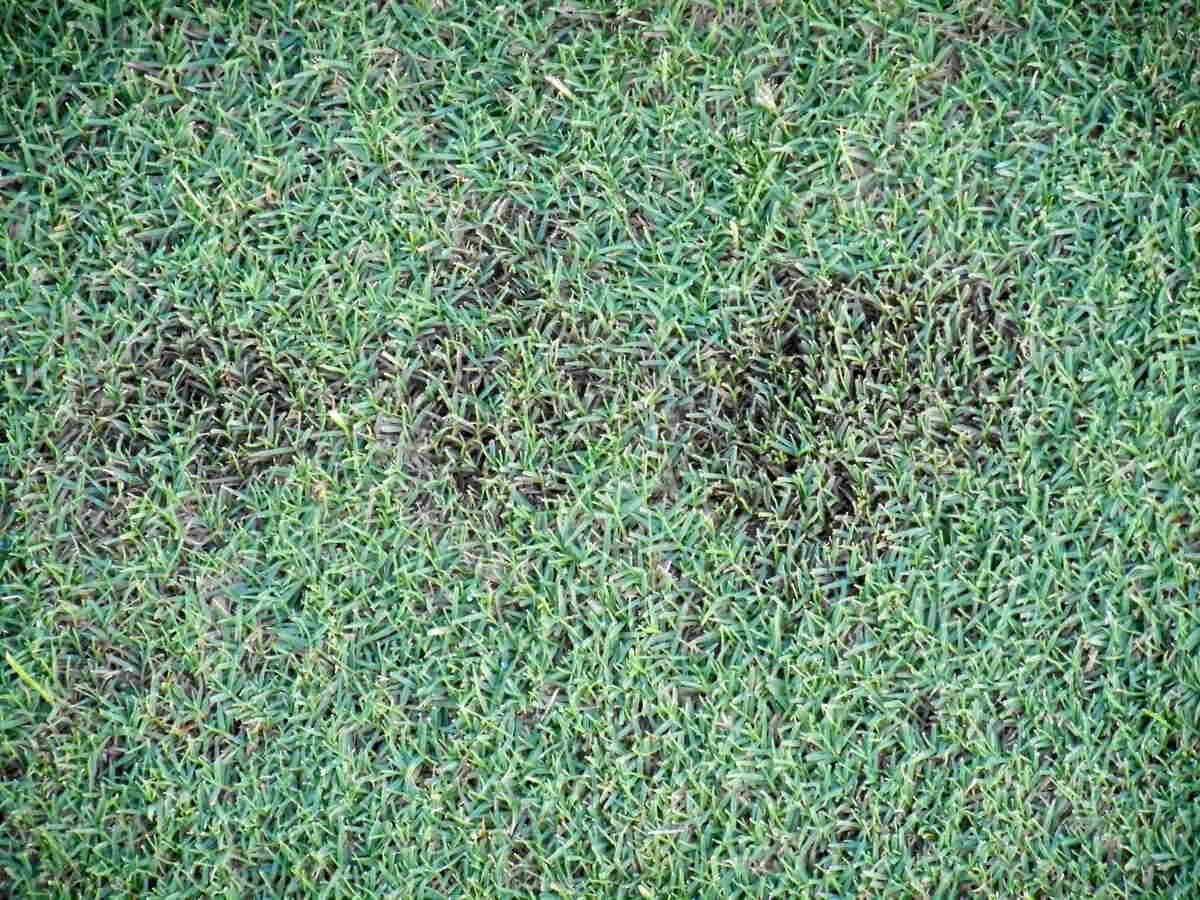
In this article, we’ll discuss some common lawn diseases in Sioux Falls, from dollar spot to powdery mildew, and explain how to identify and treat each one.
Lawn diseases are the homeowner’s true nightmare. Some can be difficult to treat and, if left untreated, they can ruin a beautiful lawn. Luckily, by identifying the disease, you can treat it accordingly.
Lawn Diseases in Sioux Falls
1. Fairy Ring
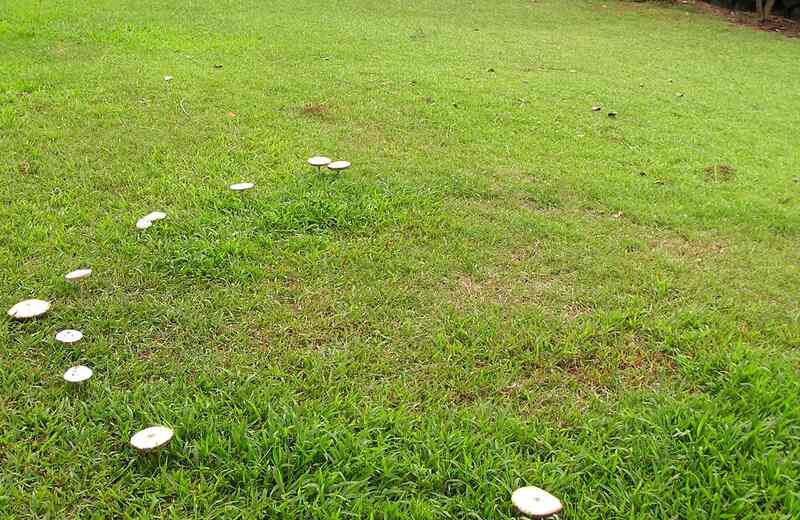
This turf disease gets its name from a popular medieval belief that these characteristic marks appeared after fairies had danced in the area. Although it would be nice to have fairies visiting our lawns, fairy rings are far from that. This is actually a fungus feeding on the decomposing organic matter on your lawn.
How do you identify fairy ring? Fairy ring appears as circular patterns of dark green grass. It can also appear as mushroom rings.
How do you treat fairy ring? The good news is that fairy ring rarely kills the grass, and sometimes it can even disappear on its own. Manage fairy rings with good lawn care practices:
- Aerate the lawn. (See our article on How to Aerate a Lawn.)
- Remove grass clippings to reduce thatch.
- Fertilize your lawn appropriately. (Read our article on How to Fertilize Your Lawn.)
If you’d like to learn more about how to get rid of fairy ring, see our article What is Fairy Ring and How to Get Rid of It.
2. Leaf Rust
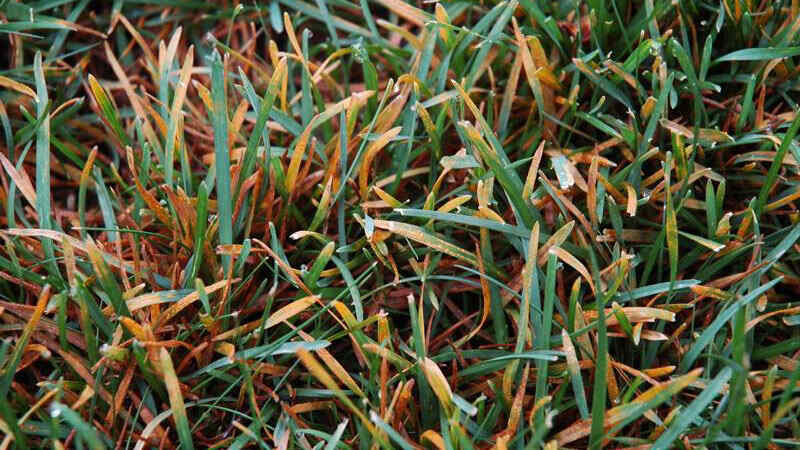
Leaf rust infections usually occur during late spring to early summer. The first signs, however, usually appear in mid-summer or fall. If left untreated, leaf rust can easily take over an entire lawn. Kentucky Bluegrass and fescues (which are among the best grass seeds for Sioux Falls) are especially sensitive to leaf rust.
How do you identify leaf rust? Look for an orange powdery substance that gets on your fingers if you touch the grass blades, much like when you eat a bag of Cheetos (yikes!). You’ll also notice yellow, orange, or red dots on the grass blades.
How do you treat leaf rust? Leaf rust is normally treated with a combination of cultural practices:
- Mow the infected grass.
- Prune shrubs and trees.
- Fertilize with nitrogen.
- Reduce moisture.
If all else fails, fungicides can be used as a last resort to treat leaf rust. To better understand how to treat leaf rust, read our article on How to Identify, Control, and Prevent Leaf Rust in Grass.
3. Powdery Mildew
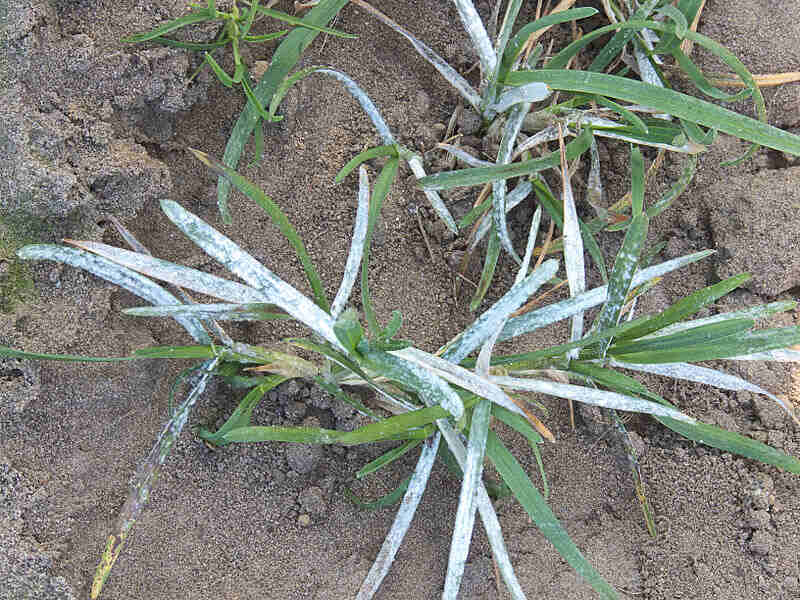
Powdery mildew is another common fungus that affects Kentucky bluegrass and fine-leaf fescues. It especially attacks grass in shaded areas and appears when the days are mild and nights are cool, which is usually spring or fall for Sioux Falls.
How do you identify powdery mildew? The infected plants show white, powdery blotches. It looks like you dusted cornstarch on your lawn. This white dust is actually the accumulation of fungal spores that easily spread the disease even further.
How do you treat powdery mildew? Powdery mildew is managed by reducing the use of nitrogen fertilizers, exposure to shade, and moisture in your yard. You can also combine these practices with the use of fungicides. Read our article on How to Treat Powdery Mildew On Your Lawn to learn more.
4. Leaf Spot
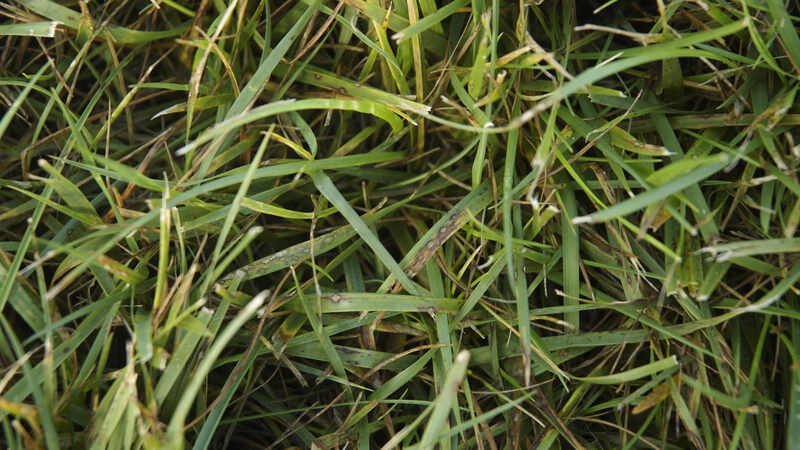
Leaf spot is caused by the Bipolaris sorokiniana fungus, and if left untreated, it can develop into melting-out. In bluegrasses, leaf spot generally manifests during warm and humid weather. Shade and excessive thatch are among the risk factors for this disease.
How do you identify leaf spot? Leaf spot is characterized by brown patches that spread through the lawn. When taking a closer look, you may notice black or purple lesions on the grass blades.
How do you treat leaf spot? To treat leaf spot, it is crucial to reduce thatch and cut back on the use of nitrogen fertilizers. Fungicides should be used as a last resort. To understand how you can apply this to your lawn, read our article on How to Get Rid of Leaf Spot and Melting-Out.
5. Dollar Spot
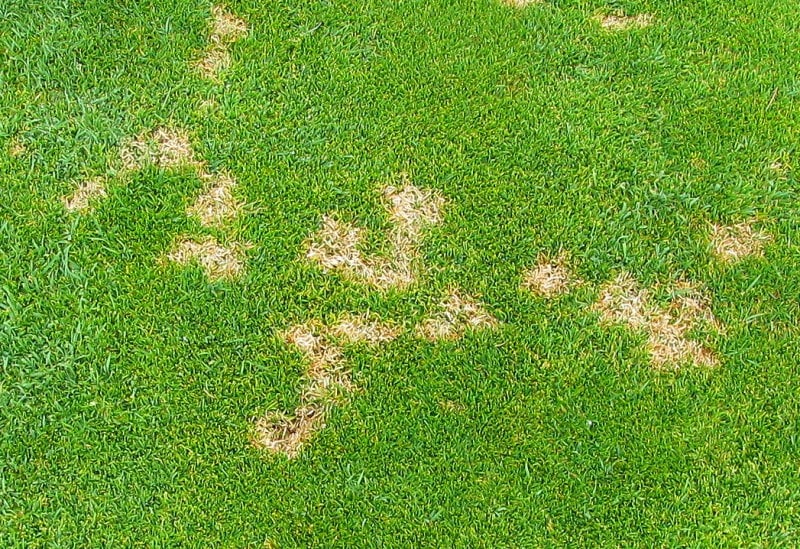
Photo credit: Glenobear / Wikimedia Commons / Public domain
Affecting mostly cool-season grasses, dollar spot appears during spring, when the warm days are followed by cool nights. This fungal disease is caused by the Clarireedia jacksonii fungus species, which loves humid environments.
How do you identify dollar spot? The telltale sign of dollar spot is the appearance of small, light-brown patches around 1 to 4 inches long.
How do you treat dollar spot? You can manage dollar spot by reducing thatch, improving soil drainage, and mowing higher.
Read our article on How to Get Rid of Dollar Spot to learn more.
FAQ About Lawn Diseases
What Causes Lawn Disease?
Although some diseases are caused by bacteria or viruses, most lawn diseases are caused by fungi. Some cultural practices and lawn conditions can encourage lawn diseases:
- Mowing the grass too short (To know more, read our Lawn Mowing Tips: How to Mow a Lawn the Right Way)
- Excess shade
- Poorly drained soil (See our 7 Ways to Improve Drainage in Your Yard)
- Excessive thatch (See our guide on When and How to Dethatch Your Lawn)
- Fertilizing too much or insufficiently
- Not watering appropriately (Early morning is usually the best time to water your lawn)
For more information on preventing problems before they begin, check out our guide on The Best Lawn Care Tips for Sioux Falls to learn more.
How Do You Treat Lawn Diseases?
Most lawn diseases are treated by incorporating better cultural practices into your weekly yard care. The management tactics will depend on what disease you are dealing with. For example, most fungal lawn diseases are caused by humid environments, so watering early in the morning and improving soil drainage are crucial. Fungicides are another option.
To get rid of the headache of lawn diseases once and for all, some homeowners even consider using artificial grass in Sioux Falls instead of real turf. Synthetic turf has no disease or pest problems and remains green all year.
How Do You Fix Dead Grass Spots?
You can revive dead grass spots with helpful cultural practices, such as dethatching, fertilizing, and overseeding in the fall, which is also the best time to plant grass seed in South Dakota.
However, if the dead spots are caused by a lawn disease, the first step is to correctly identify it and treat it accordingly. An experienced lawn care professional will be able to tell what disease might be affecting your lawn, if that’s the case.
Contact a Pro
If you see any of the signs mentioned in this article, know that you don’t have to deal with the problem all by yourself. An easier route is to contact lawn care pros in Sioux Falls. Schedule a visit and give your lawn the care it needs to thrive.
Source:
Main Image Credit: Scot Nelson / Flickr / Public Domain